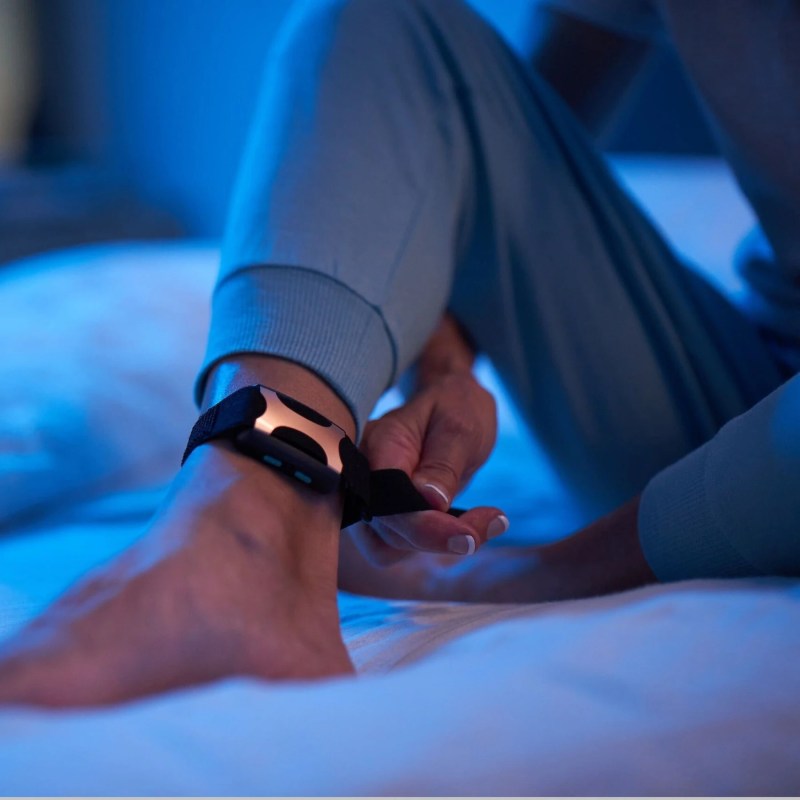
Between heart rate monitors, fitness trackers, and smartwatches that seem to do it all, wearable health and wellness devices have become a popular way to keep track of biometric data to help optimize how your body feels and performs physically. Given the prevalence of stress, anxiety, and sleep problems, it’s not surprising that there are now wearable devices meant to help calm the mind and body in order to alleviate stress. The Apollo Neuro is exactly that: A wearable stress-relieving device which ciams to calm your brain and body so that you can feel your best, focus, and sleep. But does it work?
After hearing the buzz about this rather groundbreaking wearable device, we decided to give it a shot ourselves to see if it stood up to all the hype. If you struggle with insomnia or have found that no amount of mindfulness meditation can quell your Sunday scaries, keep reading to see if the Apollo Neuro may be the stress-relieving wearable device that will ease your anxiety and help you de-escalate the tension in your mind and body.
What Is Apollo Neuro?
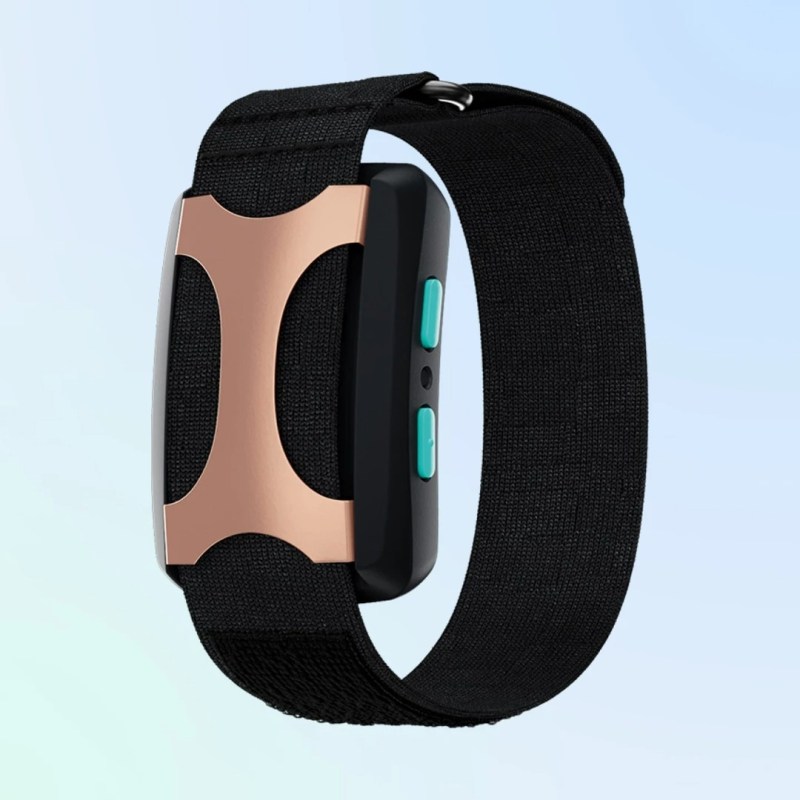
The Apollo Neuro is a wearable device, about the size of a large wristwatch (or Apple Watch, maybe), that emits delicately calibrated vibrations designed to reduce stress, increase mental clarity, lower anxiety, and improve sleep. The concept for Apollo Neuro was borne from research at the University of Pittsburgh conducted by Dr. David Rabin MD, Ph.D., and Dr. Greg Siegle Ph.D. in collaboration with the Program in Cognitive Affective Neuroscience. The research demonstrated that certain combinations of vibrations can safely and effectively alter how we feel and how the body processes in response to stress.
Apollo Neuro can be worn on the wrist or ankle and produces specific patterns of inaudible, low-frequency vibrations that may help activate the parasympathetic nervous system, lower heart rate, and increase heart rate variability, a marker that indicates how well your body can recover from stress. The greater your heart rate variability, the better you can adapt and recuperate from physical, mental, and emotional stressors such as exercise, illness, challenging work demands, and psychosocial stress.
According to Apollo Neuroscience, the company behind the Apollo Neuro device, signs and symptoms of low heart rate variability include difficulty sleeping, injuries, insomnia, chronic pain, an inability to focus, exhaustion, depression, anxiety, and frequent illnesses. Additionally, heart rate variability is considered to be the most reliable piece of biometric data for measuring stress and the balance between the sympathetic and parasympathetic nervous system activity on your body. The sympathetic nervous system is often referred to as the “flight-or-fight” system and is activated during stressful situations. It increases heart rate and respiratory rate, effectively preparing you to escape perceived danger.
In contrast, the parasympathetic nervous system, referred to as the “rest-and-digest” system, helps calm the body and facilitate normal processes like digestion and sleep. Chronic stress can disrupt the balance between these opposing branches of the nervous system and can lead to panic, insomnia, mood disturbances, anxiety, and even metabolic changes. The Apollo Neuro device is designed to help activate the parasympathetic nervous system and increase heart rate variability to take the body out of a state of chronic stress and sympathetic nervous system overactivity.
What Does Apollo Neuro Feel Like?
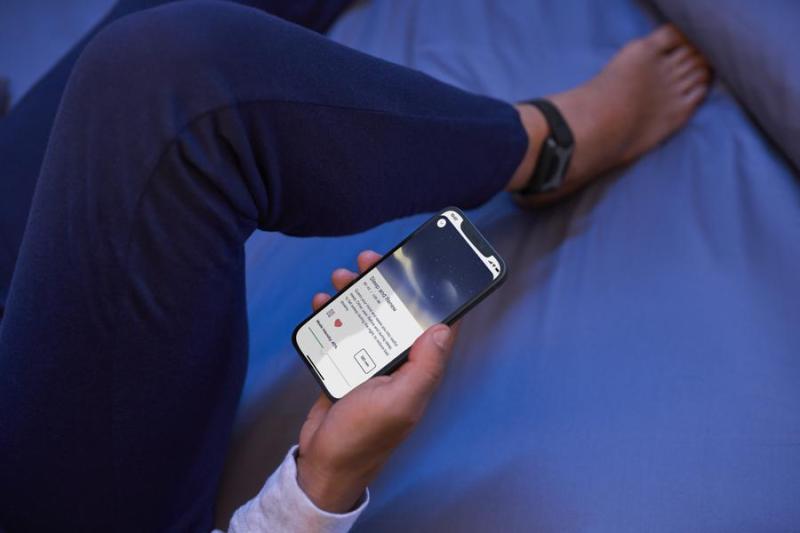
Apollo Neuro can be worn on the inside of your wrist or the inside of your ankle. It is about the size and weight of a wristwatch and has a soft, adjustable strap. Depending on which mode you select, Apollo Neuro will vibrate in soothing patterns of varying intensities and frequencies. It is virtually inaudible, though if it is pressing up against something hard (if your wrist is resting on a desk for example), the oscillations of the device may be heard as it hits the hard surface. If you listen carefully, the vibrations sort of sound like breathing or a cat purring. Using the free companion app, you can adjust the intensity of the vibrations.
How Does the Apollo Neuro Work
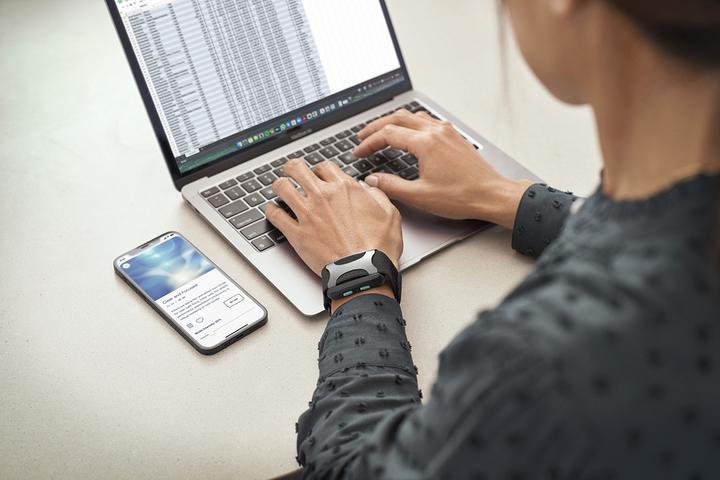
Apollo Neuro has seven different modes, each of which uses distinct vibration patterns and frequencies based on the physiological needs and responses during that type of activity. The modes are as follows:
- Energy and Wake Up: This mode increases wakefulness and attention, helping you feel more alert and energized. It is a useful mode for when you first wake up, feel groggy in the afternoon, or are having trouble staying awake during a long meeting. The Apollo Neuro device uses vibrational frequencies known to gently elevate your heart rate along with those shown to improve physical and mental recovery from stress.
- Social and Open: For times when you need to socialize and network, the “Social and Open” is supposed to help you feel engaged yet at ease. It is a fairly energizing mode, yet it has vibrational frequencies that also induce a sense of peace and relaxation.
- Clear and Focused: This mode employs evidence-backed vibrational frequencies that have been clinically demonstrated to improve performance and HRV as well as reduce heart rate under stress while increasing a feeling of calm and the ability to focus. Apollo Neuro recommends that you use this mode to improve cognitive function and productivity, athletic performance, and creativity.
- Rebuild and Recover: when you feel under the weather, have just finished a difficult workout, or are under stress, the “Rebuild and Recover” mode employs the vibrational frequencies that help your body return to homeostasis. This mode is designed to expedite the restoration of your natural resting heart rate, respiratory rate, and blood pressure more quickly after physical and mental demands.
- Meditation and Mindfulness: To help sync your body and mind, promote relaxation, and ease you into a meditative state, the “Meditation and Mindfulness” mode combines vibrational frequencies that improve body awareness with those that improve HRV. While it certainly can be used during meditation, this mode is also said to help relieve persistent tension and muscle soreness.
- Relax and Unwind: This mode uses vibrational frequencies that stimulate the parasympathetic (rest and digest) nervous system, which can help you relax and decompress before bed.
- Sleep and Renew: Used for both falling and staying asleep, the gentle “Sleep and Renew” improves the parasympathetic nervous system’s ability to help you feel sleepy and drift off to sleep.
Apollo Neuro Performance
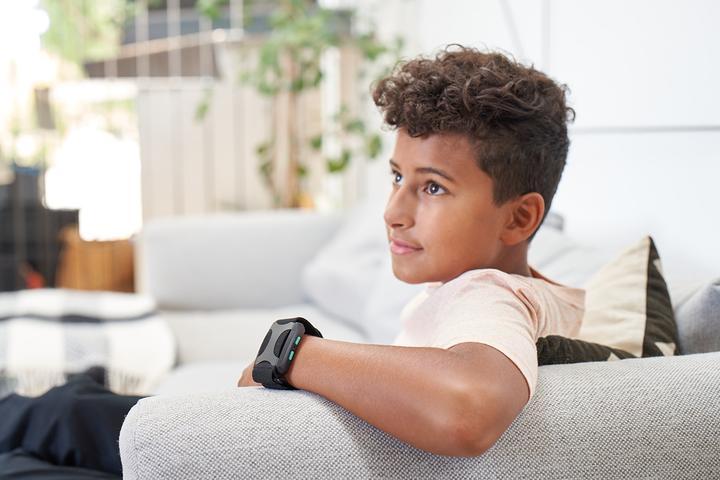
I decided to try the Apollo Neuro device to help me reduce anxiety and chronic pain and improve my sleep. After several months of daily wear, I have indeed found that wearing the Apollo Neuro before bed helps me fall asleep. Both the Relax & Unwind mode and Sleep & Renew mode seem to lull me into sleepiness. I fall asleep much faster than I used to, averaging about 1/3 the length of time it used to take. That said, I do have a complaint about the device. The Apollo Neuro sleep modes only run for a maximum of two hours, so it can help you fall asleep but does little to facilitate staying asleep. However, if you are having difficulty sleeping at night, you can reactivate the last mode you were on (in this case, Sleep and Renew) simply by pressing the two buttons on the side, which saves you the disruption on having to engage with your phone to reactivate the device.
At this point, I have tried all of the different modes and used them on numerous occasions. I find that, in general, the modes do improve what they are intended to improve. My focus is better, my mind seems clearer, and I can relax and unwind much better when wearing the device for these purposes. I have not yet noticed an alleviation in chronic pain, though feelings of anxiety seem much attenuated.
Besides the limited duration of certain modes before they require a reset, my only other quibble is that the strap is too large for small wrists. They sell a smaller strap, but that has to be purchased separately. Why not include both?
Final Thoughts
The cost of the Apollo Neuro device is a touch high at $349. It certainly seems helpful, but the overall value and whether it’s worth the money long-term will likely depend on your particular needs and whether chronic stress is indeed a burden you face. The good news is that all purchases are backed by a 60-day money-back guarantee, which means you have plenty of time to give it a try.



